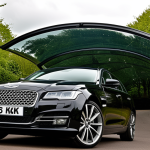Immediate Steps When Your Electric Window Stops Working
Encountering an electric window that won’t open or close can be frustrating, but taking swift action helps prevent further damage and maintains vehicle safety. First, assess the most obvious common symptoms. Is the window completely unresponsive? Or does it move slowly or jerk? Ensuring safety is crucial—lower the electric window child locks if engaged, as they often disable rear window controls and can cause confusion during troubleshooting.
Next, check the vehicle’s fuse box for blown fuses related to the electric windows. A fuse failure is a frequent cause of window malfunction and can be easily replaced. Testing the window switch control can identify whether the problem lies within the switch or electrical circuit. Be sure to use gentle pressure on the controls to avoid damaging delicate parts.
Also to see : Ultimate Handbook for Securely Bypassing Your Car’s Immobilizer for Maintenance in the UK
If the window is stuck halfway, secure it temporarily to prevent it from sliding down and causing further mechanical damage or safety hazards. Tape and soft padding work well here. These initial troubleshooting steps often isolate the cause or at least prevent escalation before professional or DIY repairs begin. Prioritising safety while observing these quick fixes ensures your vehicle remains secure and the electric window system is protected from worsening faults.
Understanding How Electric Windows Work in UK Vehicles
Electric windows combine several essential components working together to function smoothly. The electric window mechanism typically includes the window switch, motor, regulator, and wiring harness. Pressing the window switch sends an electrical signal to the motor, which then activates the regulator to raise or lower the window. Each part plays a distinct role: the motor powers movement, the regulator guides the window glass, and wiring connects the system.
Additional reading : Mastering ECU Diagnostics: Your Ultimate UK Handbook for Identifying and Fixing Common Vehicle Problems
In UK vehicle models, designs may vary slightly, particularly in wiring layouts and switch configurations to meet specific safety and regulatory standards. For instance, some models incorporate child lock features and enhanced insulation to prevent electrical faults. Understanding this helps when diagnosing faults by identifying which component may cause the failure.
Recognising signs of component-specific failure is crucial. A completely unresponsive window may indicate a blown fuse or faulty switch, while a slow or jerky motion often points to motor strain or regulator issues. Wiring problems can cause intermittent function or total electrical failure.
A window switch diagram can assist owners or technicians to locate faults by tracing the electric path visually. Familiarity with these basic functions and variations in UK models empowers more accurate troubleshooting and effective repair planning.
Diagnosing Common Electric Window Faults
When troubleshooting electric window problems, the key is first to identify if the issue is mechanical or electrical. Typical failures include windows being stuck, moving slowly, or producing unusual noises. To diagnose, start with a clear fault diagnosis approach: listen for the motor sound when pressing the switch. No sound often indicates electrical faults like wiring or switch failure, while strange noises may point to regulator or motor wear.
A repair flowchart can guide this step-by-step process effectively. For example, if the window is stuck, check fuse and child lock settings before inspecting the motor and regulator. If it operates but slowly, the motor may be weakening or the tracks obstructed.
Recognising specific patterns helps pinpoint problems: a window that works intermittently usually signals wiring issues or connector corrosion. Meanwhile, noisy operation can stem from worn gears or dry regulators needing lubrication.
Systematic troubleshooting electric window problems reduces guesswork and saves repair costs by narrowing down faults accurately. Understanding these common issues assists in choosing the correct repair method or deciding when to seek professional help, enhancing vehicle safety and ensuring the window’s reliable function.
Tools and Parts Needed for Electric Window Repairs
Having the right electric window repair tools is vital for effective troubleshooting and fixing issues. Essential equipment includes a multimeter for electrical testing, panel removal tools to access the window components without damage, and screwdrivers with various head types to remove fixtures. A socket set is often necessary for loosening nuts securing motors or regulators.
When sourcing parts, the UK parts availability is generally good for common brands like Ford, Vauxhall, and BMW. It is important to select parts compatible with your specific vehicle model to ensure proper function. Recommended brands often provide quality motors, regulators, and switches designed to UK vehicle standards, which contribute to durability and fit accuracy.
Cost estimates vary with the complexity of the repair. A replacement switch may cost around £20 to £50, motors can range from £50 to £150, while regulators might be priced similarly or higher. Labour costs should be considered if professional help is sought, but DIY repairs can reduce expenses significantly.
Choosing the correct tools and sourcing reliable UK parts ensures repairs are efficient, cost-effective, and maintain vehicle safety. Preparation in this phase sets the foundation for successful initial troubleshooting and quick fixes if your electric window won’t open or close.
Immediate Steps When Your Electric Window Stops Working
When your electric window won’t open or close, swift initial troubleshooting is key. First, observe the common symptoms—is the window entirely unresponsive, or does it move sluggishly? This helps focus the next steps.
Begin by checking the child lock settings, as engaged locks often disable rear window controls and may be overlooked during diagnosis. Next, inspect the vehicle’s fuse box specifically for blown fuses related to the window circuit. Replacing a blown fuse is a straightforward and effective quick fix that restores function in many cases.
Test the window switches carefully, applying gentle pressure to avoid damage. A non-responsive switch may indicate electrical failure needing replacement. Meanwhile, if the window is partial stuck, secure it with tape or padding to prevent it slipping down, which could compromise vehicle safety or damage mechanical components.
Taking these immediate steps reduces risk and confines the problem, enabling safer and more targeted repairs later. This practical approach ensures you don’t worsen the fault or compromise your vehicle’s security while pursuing effective solutions.
Immediate Steps When Your Electric Window Stops Working
If your electric window won’t open or close, start by assessing the common symptoms carefully. Is the window completely unresponsive, or does it respond sluggishly? Pinpointing these symptoms directs your initial troubleshooting efforts efficiently.
Begin by verifying the child lock settings because active locks can disable window controls, especially in rear doors, causing confusion. Next, inspect the vehicle’s fuse panel for blown fuses linked to the window system. A faulty fuse is a frequent culprit and often a simple quick fix; replacing it can immediately restore function.
Once fuses and child locks are ruled out, test the window switches. Use gentle pressure when pressing the controls to avoid damage and listen for any motor sounds indicating partial function. If the window remains stuck, secure it with tape or soft padding before further investigation. This step is critical to maintaining vehicle safety by preventing the glass from dropping or damaging internal mechanisms.
Taking these immediate steps reduces the risk of worsening faults and preserves your vehicle’s integrity, setting a solid foundation for effective troubleshooting and repair.
Immediate Steps When Your Electric Window Stops Working
When your electric window won’t open or close, immediate and precise action is crucial. Begin by observing the common symptoms: is the window completely unresponsive or does it move sluggishly? This diagnosis guides your initial troubleshooting.
First, check the child lock settings. Engaged child locks can disable rear window controls, often causing the perception that the window system has failed entirely. Next, inspect the vehicle’s fuse box for blown fuses related to the electric windows; a simple fuse replacement is one of the quickest and most effective quick fixes.
Test the window switches cautiously, applying gentle pressure. If the switch shows no response, it might need replacement. Listening for motor sounds during operation offers clues: silence often suggests an electrical fault, while noises could indicate mechanical issues.
If the window is stuck mid-position, secure it carefully with tape or soft padding to prevent it sliding down. This temporary measure preserves vehicle safety by preventing glass damage or injury. Taking these immediate steps controls damage and sets the stage for more detailed repairs while keeping safety paramount.




